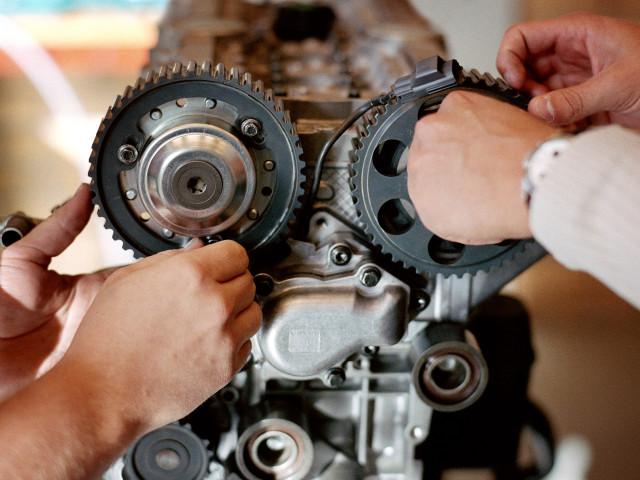Lectures and seminars introducing basic ship hydromechanics, linear theory on ship manoeuvrability, blade element theory, strategies and methods for combining first principles mechanics and mathematical models into a numerical simulation structure. Hands on development of a ship motion simulation code including coding sub-models for propulsion and steering. Experimental validation and hands on experiments and evaluation on ship manoeuvrability with respect to international standards.
SD2726 Modelling ship’s propulsion and manoeuvring 6.0 credits

The course is about simulation of ship’s motion in calm water. It includes modelling of propeller forces, hydrodynamic hull forces and rudder forces and their balance with ship inertia.
Information per course offering
Choose semester and course offering to see current information and more about the course, such as course syllabus, study period, and application information.
Information for Autumn 2026 Start 26 Oct 2026 programme students
- Course location
KTH Campus
- Duration
- 26 Oct 2026 - 11 Jan 2027
- Periods
Autumn 2026: P2 (6 hp)
- Pace of study
33%
- Application code
10608
- Form of study
Normal Daytime
- Language of instruction
English
- Course memo
- Course memo is not published
- Number of places
Places are not limited
- Target group
- All Master's programmes, provided that the course can be included in the programme.
- Planned modular schedule
- [object Object]
- Schedule
- Schedule is not published
Contact
Course syllabus as PDF
Please note: all information from the Course syllabus is available on this page in an accessible format.
Course syllabus SD2726 (Autumn 2022–)Content and learning outcomes
Course contents
Intended learning outcomes
This course gives a hands on introduction to a first principle approach for mechanical modelling in the applied context of ship´s propulsion and manoeuvring. The objective is that students after finishing the course shall be able to:
- demonstrate methodological knowledge and understanding in ship hydromechanics, propulsion and manoeuvring;
- model ship’s propelled motion in calm water based on first principles mechanics and simulating the ship’s manoeuvring characteristics;
- evaluate ship´s manoeuvrability numerically as well as experimentally with respect to international safety standards;
- present and discuss engineering conclusions, the theoretical knowledge and arguments behind them, orally and in writing;
- describe performance, safety environmental and economical aspects in the context of propulsion and manoeuvrability;
- reflect on the topic, the course content and the course design in relation to societal norms and equality.
Literature and preparations
Specific prerequisites
Completed degree project on Bachelor level with major in technology.
English B / English 6
Literature
Examination and completion
Grading scale
Examination
- TEN1 - Oral exam, 2.0 credits, grading scale: A, B, C, D, E, FX, F
- ÖVN1 - Excercises, 4.0 credits, grading scale: A, B, C, D, E, FX, F
Based on recommendation from KTH’s coordinator for disabilities, the examiner will decide how to adapt an examination for students with documented disability.
The examiner may apply another examination format when re-examining individual students.
If the course is discontinued, students may request to be examined during the following two academic years.
Examiner
Ethical approach
- All members of a group are responsible for the group's work.
- In any assessment, every student shall honestly disclose any help received and sources used.
- In an oral assessment, every student shall be able to present and answer questions about the entire assignment and solution.